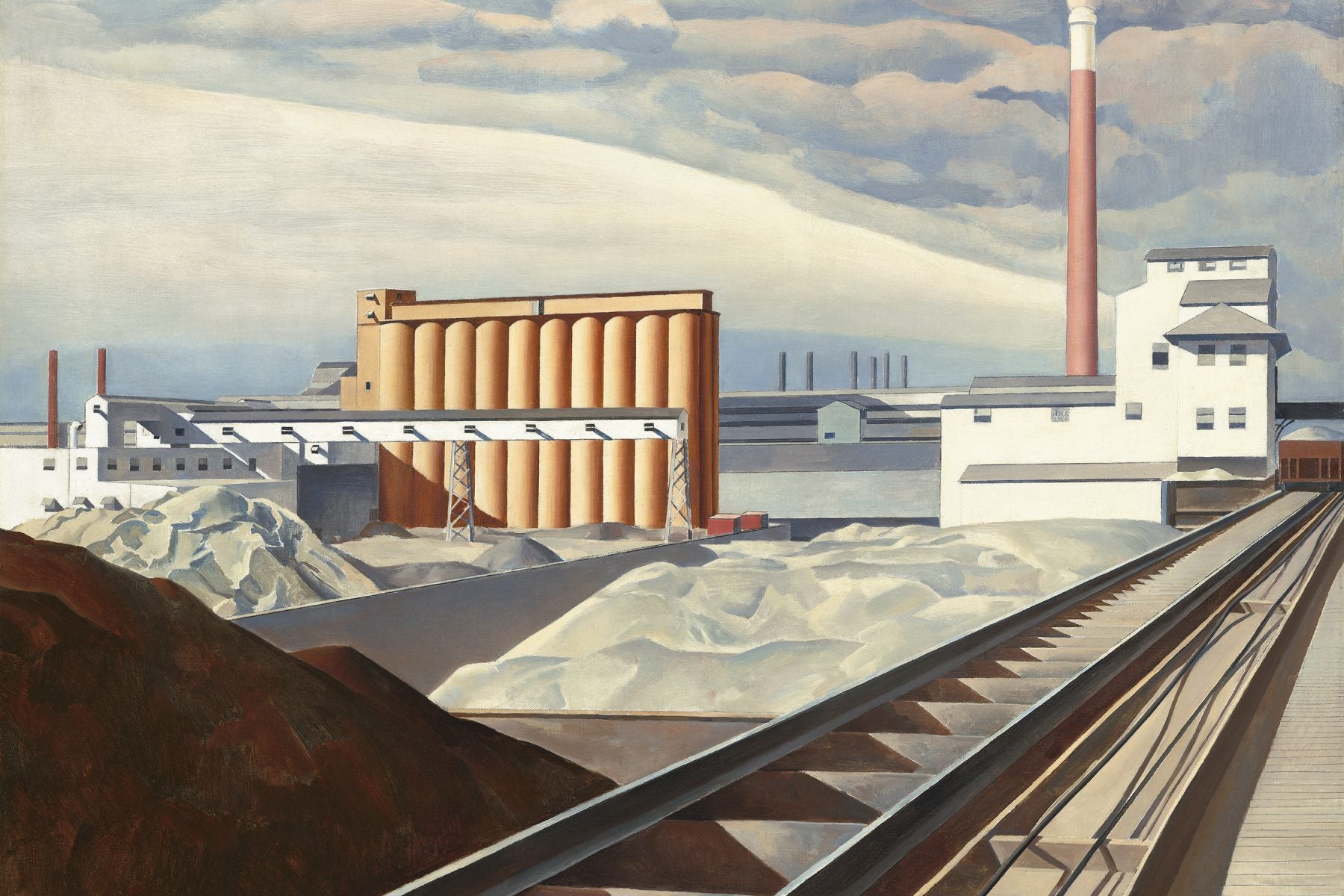Colossal machines, billowing factories, and angular skyscrapers were painted with exacting precision in the early twentieth century. Barely a brushstroke was visible on their canvases, nor were any humans, except maybe a few workers dwarfed by the industrial subjects.
“The multiple meanings of the factory—a symbol at once of progress and stagnation, wealth and poverty, the liberating potential of technology and the confining strictures of work (or, worse yet, the lack of work)—wove their way through the political and cultural life of the Depression,” writes historian Max Fraser in American Art. This vein of American art is now known as Precisionism, a modernist style that emerged in the early decades of the twentieth century.
The de Young Museum in San Francisco is exhibiting over one hundred examples of Precisionism in the exhibit Cult of the Machine. These include Charles Sheeler’s meticulously painted “Classic Landscape” (1931), based on visits to the Ford plant in Michigan, Gerald Murphy’s exuberant “Watch” (1925) which zooms in on the mechanics of a timepiece, and Charles Demuth’s “Incense of a New Church” (1921) in which smoke wafts from a factory like some sacred cloud. The blurred propeller of Elsie Driggs’s soaring “Aeroplane” (1928) was inspired by her air travel, while Georgia O’Keeffe portrayed the skyscrapers of Manhattan like stark monoliths in “City Night” (1926).
Similar to Futurism and Cubism which originated in Europe, these works, whether painting, photograph, or print, elevated geometry and structured compositions above realism. “The Precisionists chose to depict the twentieth century’s new dependence on technology and the machine in a way that celebrated the efficiency and promise of industrial work: the style created clearly defined, even idealized images of industrial subject matter including factories, machinery, and the people who operated them,” writes scholar Brianna McMullen in Art Education. Yet in some of the Cult of the Machine pieces, it’s hard to tell whether the artists were idolizing the technology of the Machine Age, or highlighting its dangerous power. In Clarence Holbrook Carter’s “War Bride” (1940), this anxiety is made clear, as a woman in white approaches a hulking machine that seems ready to consume her.
“Precisionist art reveals a much more conflicted stance toward the status of labor—artistic as well as industrial—in an age of increasing mechanization,” writes art historian Sharon Corwin in Representations. “Though Precisionist imagery was able, at times, to represent a vision of industrial America as an entity marked by progress and strength, this characterization can, I fear, blind one to the true strangeness and uncertainty of the Precisionist visual project.” Ironically, these artists worked so intently on their streamlined aesthetics that their human labor was invisible. Similarly, in their paintings machines operate with no workers in sight. Conditions of the factories, where people were frequently treated as machines in assembly lines, were mostly overlooked in Precisionist art.
The Precisionist movement fizzled out after World War II, overtaken by abstraction in art. Cult of the Machine revisits this early twentieth-century art in the context of our twenty-first century perceptions of technology, when jobs are being lost to automation, and surveillance poses a threat to privacy. Machines have enabled American modernity, but with their rise is always the haunting potential of their power.







